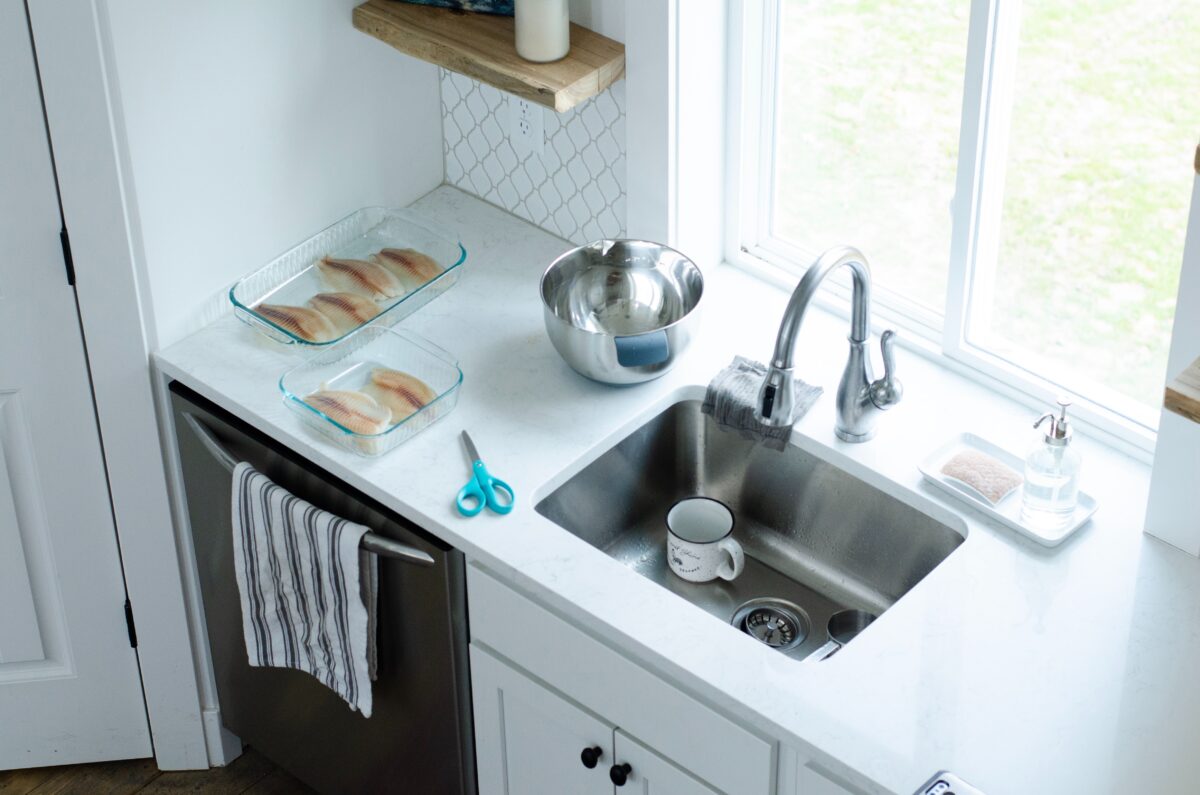Cleaning Appliances
Cleaning your appliances will not only keep your home happier and healthier, but it also ensures to get the longest life out of your equipment. Regular maintenance of appliances helps them run more efficiently extending their lifespan and reduces regular wear and tear.
 Stovetop
Stovetop
Off all appliances, stovetops probably get the most abuse. Regular use leads to common spills and spatters, grease grime, and burnt-on food. The best way to maintain your stovetop is to handle any regular messes immediately and clean as you go.
As long as regular maintenance is performed, you’ll only need to do a thorough deep cleaning every 3 – 6 months depending on how often the appliance is used. During a deep cleaning, you should make sure to not just wipe down the surface, but also clean any drip pans, remove knobs, and if applicable lift stovetop and clean underneath.
Oven
Oven cleaning is a task most of us hate. It’s time-consuming and typically requires quite a bit of elbow grease. Maintaining your oven can mean the difference between hours and minutes of scrubbing. We recommend wiping down the exterior of your oven every week. This will remove fingerprints, grim and nasty germs.
The interior of your oven should be cleaned every 3 – 6 months or seasonally as needed. If capable, run the self-cleaning cycle on your oven before using any products/chemicals to clean the interior. The cleaning cycle will burn off residue grease and food debris, and reduce how much you need to scrub afterward. Make sure to remove the oven racks before running the cleaning cycle. Remember to also read the appliance’s manual before cleaning. You may accidentally void your manufacture’s warranty if you improperly clean your oven.
 Microwave
Microwave
The germiest part of your microwave is likely to be the handle, touchpad, and dial. Microbes from your hands and any food debris get deposited every time you handle the appliance. Every week use and all-purpose or disinfectant to wipe down the exterior of the appliance.
To clean the interior Place one cup of water and a couple of tablespoons of white vinegar in a microwave-safe container. Microwave on high for three minutes and leave the door closed for about five minutes following to allow steam to permeate the interior. Follow by wiping the interior with a damp towel or sponge to remove loosened food particles. If you have some tough stuck-on debris use a food-safe all-purpose cleaner to scrub the rest of the debris off.
Refrigerator
Your refrigerator should be cleaned at least every 3 months, but the more often the better. Raw food is a breeding ground for all sorts of nasty bacteria. Regularly cleaning and disinfecting your fridge can keep bacteria and mold at bay.
Wipe up any spills and splatters immediately if possible. Clean and disinfect high traffic, high touch areas such as handles and drawer pulls on the weekly.
To clean the interior, remove all the food contents. Make sure to inspect and dispose of any expired or rotten items. Next, remove and wash all drawers and shelves. Then wipe down the interior surfaces with hot soapy water, rinse afterward to remove soap, and dry with a clean towel. Put back all the drawers and shelve. Finally, place all food items back inside. Make sure to wipe down any sticky jars or containers.
Please note the CDC recommends not leave any food that needs to be refrigerated out longer than two hours.
 Dishwasher
Dishwasher
Clean your dishwasher every 1 – 3 months. Not only does your dishwasher have food debris to contend with, but minerals in your water can also build up within the appliance. Built-up hard water can clog up your machine and also lead to deposits on your dishes.
To descale and sanitize place a microwave-safe dish with white vinegar in the machine and run a full cycle. Follow by sprinkling baking soda in the dishwasher and running another cycle. For more detailed instructions on cleaning your dishwasher check out our blog here.
Garbage Disposal
Garbage disposals should be cleaned on a weekly basis. This will prevent bacteria growth and nasty odors. Even with constant water running, food and other debris can and does get stuck around the mechanisms in your drain/disposal. Regular cleaning will remove this debris and the stink mold, mildew, and bacteria that can surround it.
To clean, first, make sure the disposal is turned off. Next, sprinkle ½ cup of baking soda into the drain and add ½ cup of white vinegar. Cover the drain with your sink stopper and allow it to foam for a few minutes. Finally, rinse with hot water to flush the grime.
Washing Machine
Studies show washing machines can hold all sorts of nasty bacteria and viruses you might never have imagined. Running a cup of distilled vinegar or chlorine bleach in an empty cycle once a week will help kill the germs, clean your machine, and help keep it running smoothly.
 Dryer
Dryer
Emptying your lint trap after every dryer cycle will keep the appliance running as well as possible. Built-up lint with the machine, filter, and vent can also lead to house fires. Lint is highly flammable and can ignite when exposed to the heat of your dryer. Vacuuming out the filter trap, washing the filter, and cleaning out the vent at least once every three months can help prevent fires.
Air Conditioner
AC systems have filters that collect dust mites, spores, allergens, and other particles. Change these filters every couple of months so they don’t become clogged. Clogs can put extra strain on the appliance as well as allow extra nasties to pass through.
Clean Arrival
Looking for more tips and tricks to keep your home and appliances sparkling clean? Check out our Facebook or Instagram. To help maintain the rest of your home discover our recurring cleaning service on our booking page or call us at 503-567-5404.

Telephone No.5035675404
 GET UPDATES
No charge. Unsubscribe anytime.
GET UPDATES
No charge. Unsubscribe anytime.
 GET UPDATES
No charge. Unsubscribe anytime.
GET UPDATES
No charge. Unsubscribe anytime.











